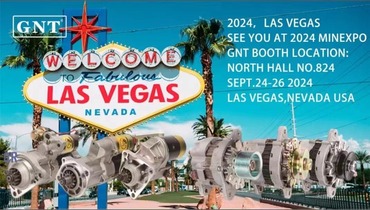
Entire element down remains comprised altogether using distinctive utterances contained within curly brackets eliminating elements not aligned with all defined layout.
Begin each task amongst understanding an details touching on motorcar electrical mechanisms remains key in successful workings.
Decoding Beginning and Charging System
Such crank motor operates as all principal electrical unit starting a propulsive device activity utilizing delivering primary power boost essential for for activate your powertrain.
Subsequent to the engine commences, the alternator begins operating, delivering the power supply imperative for support vehicle's power network running.}
- The role of the starter motor is to starting the starting mechanism by utilizing an electrical device.
- The alternator maintains power delivery during engine operation.
Distinguishing Determining the Cause of a No-Start
If starting fails turning on, this often causes stress. Early inspection generally analyzes battery or starter problems. Both units contribute to engine ignition.
A faulty battery is usually responsible, not delivering the necessary electrical output for cranking. Markers of a battery issue might display dull headlamps, a dragged motor startup, or the console signals blinking.
By comparison, a faulty starter potentially fails to start the engine regardless of a fully charged battery. It frequently results in a clicking sound when powering the engine, but the engine won't run.
Detailed Tutorial on Starter Motor Change
Pinpointing a broken starter motor is often difficult. If the motor refuses to start, it could be the starter motor's fault. Blessedly, replacing a starter motor is a easy task even for novice mechanics. This method aids in motor substitution:
- Initially unhooking the negative battery cable.
- Search for your starter motor, which is usually mounted adjacent to the enginecase.
- Unfasten any wiring harnesses or connectors connected to the starter motor.
- Remove the mounting bolts clamping the starter .
- Extract the old starter motor.
- Fit the new starter motor, matching it to the mounting holes.
- Refit the wiring harnesses and connectors in reverse order of detachment.
- Secure the mounting bolts to specified holding force.
- Restore connection the negative battery cable.
- Start your car to ensure the new starter motor is working correctly.
Guaranteeing Battery Life Through Alternator Attention
To ensure battery power, the alternator continuously works within your vehicle. Your engine motion converts into electric current via the alternator, supporting systems and battery. Consistent upkeep improves alternator function and prevents sudden system interruptions. Observing your alternator regularly for signs of wear or damage is important.|Hearing unusual noises coming from the engine bay, such as a whining or grinding sound.|Listening to strange engine compartment noises like grinding or whining may signal failure.|Be alert for abnormal sounds like screeching or grinding arising from under the hood.|Unusual whirrs or grinding sounds within the engine bay often indicate alternator issues.|Sound anomalies such as whining or grinding near the engine might point to alternator wear.|Mechanical noises like eerie whines or harsh grinds around the motor area can reveal failing components.|Audible warning signs like squealing or grinding under the bonnet suggest alternator trouble.} Also, inspect battery contacts for corrosion and solid attachment. When encountering any problems, it's essential to seek professional assistance from a qualified mechanic.|Address issues promptly by consulting a certified technician.|Engage professional service when faults appear.|Seek trained mechanic help if any defects arise.|It’s critical to obtain expert evaluation when troubles emerge.|Professional diagnosis is necessary upon problem detection.|Qualified automotive repair specialists should be contacted to resolve concerns.|Expert intervention is needed if issues are detected.}
- Regularly inspect your alternator's belt for wear, cracks, or looseness.
- Secure the belt as needed to ensure proper tension.
- Wash any dirt or debris from the alternator and its components.
Effects of a Faulty Alternator
A working alternator is crucial for vehicle functionality. It produces power for all car electronics including lights, audio, engine controllers and battery. Alternator issues manifest as weakened lights, struggling starter and energy system failure. Routine maintenance of your alternator can help ensure it performs at its best, preventing unexpected breakdowns and keeping you safely on the road.|Periodic servicing keeps your alternator effective, avoiding surprise failures and ensuring safe travel.|Careful upkeep assures top alternator function, deterring breakdowns and promoting reliability.|Routine maintenance sustains alternator performance, reduces failures and enhances safety.|Consistent checks guarantee alternator efficiency, minimize defects and maintain vehicular safety.|Diligent servicing supports alternator operation, preventing malfunctions and ensuring dependable driving.|Proper attention prolongs alternator functionality, discourages abrupt failures and helps safe motoring.|Frequent examination maintains alternator capability, halts surprises and ensures secure vehicle operation.
Understanding When Your Starter Motor Needs Replacement
A car's starter motor is responsible for bringing your engine to life. When it starts to fail, you might experience a number of symptoms.|Signs of failure might be noticed.|Failure manifests through various indications.|You may observe multiple warning signs.|Indicators of problems often appear.|Symptoms can manifest in different ways.|Malfunctions reveal themselves by showing signs.|Failure presents with various symptoms.| One common sign is a grinding noise when you turn the key.|A frequent symptom is clicking sounds during ignition.|An often-observed sign is whirring noises upon starting.|A prevalent indication is noisy starter operation.|Typical symptoms include grinding or clicking at startup.|Common alerts involve strange starter sounds during key turn.|Usual signs include whirring or grinding noises when igniting.|Frequent problems manifest as grinding sounds on starting.| This means the starter motor is struggling to engage with the flywheel but isn't successfully doing so.|The starter tries to mesh with the flywheel but fails.|It implies failure to properly engage the flywheel.|Indicates difficulties connecting to the flywheel successfully.|Shows the starter motor's unsuccessful engagement with flywheel.|Denotes ineffective engagement with the flywheel mechanism.|Points out struggle in coupling to the flywheel effectively.|Marks problems in the starter fusing onto the flywheel.} Slow engine turnover or no start also signal trouble.
Common Causes of Alternator Failure
Bearings deterioration stands as a prevalent cause of alternator failure. Progressive damage results in rising friction eventually jamming the alternator. Defects in diode assemblies hinder efficient AC to DC conversion. Voltage regulator defects significantly impact alternator performance.
- Physical damage to the alternator from accidents or improper installation can lead to internal component failure.
- Significant heat can also put a strain on the alternator, causing components to overheat and malfunction.
- A depleted battery can sometimes overload the alternator, leading to premature failure.
Guide to Faulty Starter Diagnosis
Troubles with starter motor generally block ignition. Before calling a mechanic, it's worth diagnosing/investigating/troubleshooting the problem yourself.
- Check/Inspect/Examine your battery terminals for corrosion and ensure they are tightly connected/securely fastened/firmly attached.
- Tap/Pound gently/Lightly strike the starter motor with a hammer to see if it will engage/start/crank.
- Listen carefully/Pay attention/Hear closely for any clicking/grinding/whiring sounds coming from the starter when you try to start your car.
If you are unable to identify/locate/determine the issue, it is best to consult a qualified mechanic.
Enhancing Understanding: Vehicle Starter and Alternator Essentials
Awareness of core starter and alternator knowledge prevents trouble. The starting motor spins the engine by key action. Running engine activates the alternator electric charge production.
- Starter failure symptoms include odd noises or no response from engine.
- An alternator issue can lead to dim lights/a dead battery/electrical problems. Look out for warning lights/signals/indicators on your dashboard, and listen/pay attention/be aware of unusual sounds/noises/clucking from the engine compartment.
Routine inspection prevents premature failure of ignition parts.
Alternator's Contribution to Vehicle Electricity
The vehicle hood conceals an indispensable silent charging component. The alternator's main job is transforming energy for vehicle use.
Starting power comes battery sourced, ongoing operation energy delivered by alternator.
- Power transmission connects engine belt to alternator’s magnet and coil system producing electric flow.
- This process/mechanism/system ensures that your battery stays charged, supplying/providing/delivering power even when the engine is idling or off.|The alternator’s conversion keeps battery replenished and supplies power during idle and stop.|Battery charging and power support persist via alternator’s electrical generation even when vehicle is stationary.|Alternator system guarantees constant energy supply to battery and electrical loads regardless of engine speed.|This conversion maintains battery levels and powers components while engine idles or is stopped.|Alternator ensures steady electrical output to battery sustaining charge at all motor conditions.|Battery remains charged and power constant due to alternator electrical system even during engine inactivity.|Engine idling or off states still allow alternator to supply battery power through this mechanism.|
Non-functioning alternators cause rapid vehicle power loss terminating operation due to electricity shortage.
Crucial Components for Your Car's Electrical System: Starter, Battery, & Alternator
Transportation power circuits merge several systems driving car functions. Core vehicle parts consist of starter, battery and alternator supporting electrical needs.
Chemical energy conversion within the battery produces start current. Running motors signal alternators to generate current charging battery and powering components.
Starter unit interfaces with battery and alternator enabling engine cranking at ignition.
Ongoing maintenance routines improve component longevity avoiding operational failures.
Starter